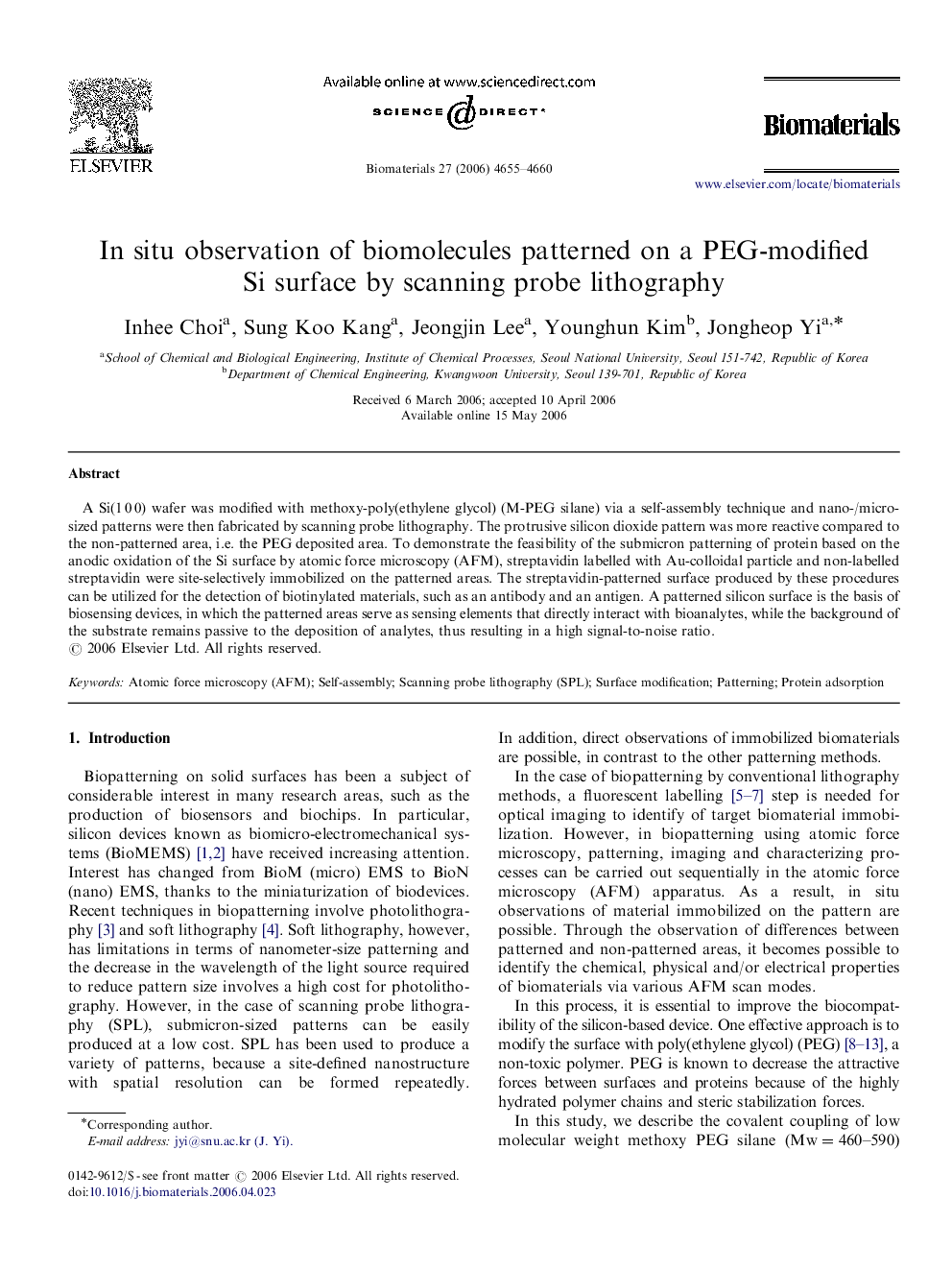| Article ID | Journal | Published Year | Pages | File Type |
|---|---|---|---|---|
| 11900 | Biomaterials | 2006 | 6 Pages |
A Si(1 0 0) wafer was modified with methoxy-poly(ethylene glycol) (M-PEG silane) via a self-assembly technique and nano-/micro-sized patterns were then fabricated by scanning probe lithography. The protrusive silicon dioxide pattern was more reactive compared to the non-patterned area, i.e. the PEG deposited area. To demonstrate the feasibility of the submicron patterning of protein based on the anodic oxidation of the Si surface by atomic force microscopy (AFM), streptavidin labelled with Au-colloidal particle and non-labelled streptavidin were site-selectively immobilized on the patterned areas. The streptavidin-patterned surface produced by these procedures can be utilized for the detection of biotinylated materials, such as an antibody and an antigen. A patterned silicon surface is the basis of biosensing devices, in which the patterned areas serve as sensing elements that directly interact with bioanalytes, while the background of the substrate remains passive to the deposition of analytes, thus resulting in a high signal-to-noise ratio.
